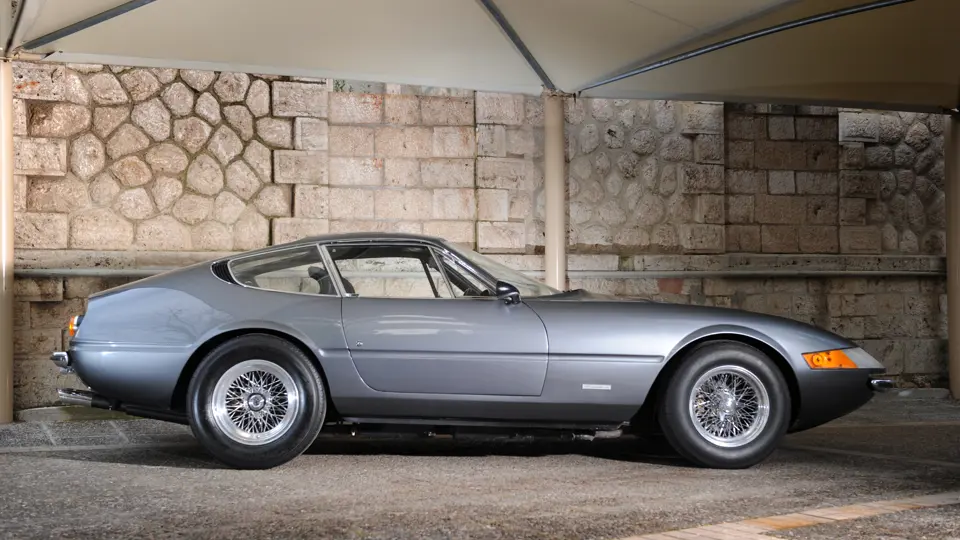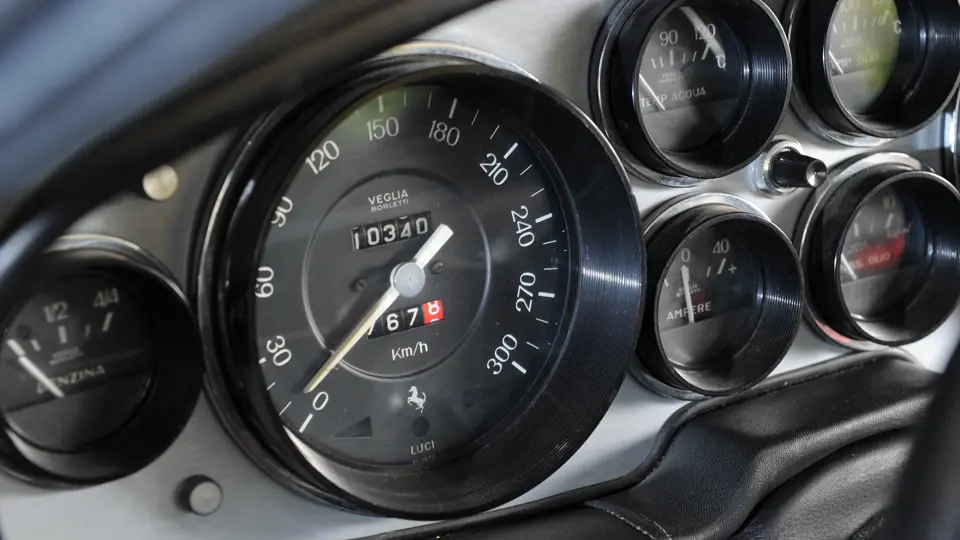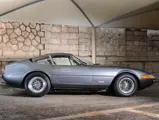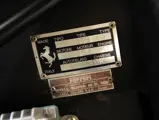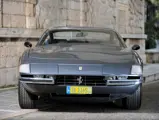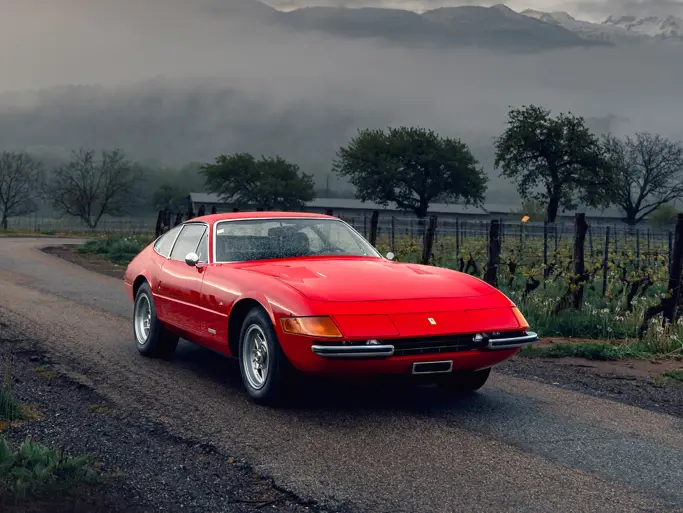352 bhp, 4,390 cc DOHC V-12 engine, Six Weber carburettors, five-speed manual transaxle, independent front and rear suspension by coil springs and wishbones, and four-wheel hydraulic disc brakes. Wheelbase: 2,400 mm (94.5")
• The world’s fastest production car at its introduction
• Designed by Pininfarina, built by Scaglietti
• Zero to 60 mph in 5.9 seconds; ¼ mile in 13.8 seconds; top speed 174 mph
Considered the ultimate expression of the front-engine V-12 Ferrari, the 365 GTB/4 illustrates Enzo’s dictum that “the horse does not push the cart, it pulls it”. The Daytona’s exaggerated hood practically places the driver between the back wheels.
The Daytona was built around a tube steel frame, and the body featured a horizontal body side crease just below the level of the wheel wells. Early models had full-width plastic headlight covers but all had pop-up lights from 1970 onwards. The Kamm tail contained two taillights on each side and aluminium was used for the doors, hood and boot lid, whilst 5-spoke wheels were standard.
Its peerless mechanical specifications backed up the Daytona’s claim to be the fastest production sports car in the world, with a claimed top speed of 174 mph. The four-cam V-12 engine displaced 4.3-litres and cranked out an impressive 352 horsepower. Road and Track’s Dean Batchelor photographed an indicated 180 mph at a flat-out 7,000 rpm, and even when the speed was calculated exactly, it still came out to be 173 mph.
The Daytona was introduced at the Paris Salon in 1968, and whilst not everyone liked the headlights and quibbled about heavy steering, the pedals and the lack of a seat back adjustment, there was general agreement that it was great fun to drive – the more so the faster one drove!
Le Mans winner for Ferrari and lifetime auto journalist Paul Frere reported 176 mph in Autostrada traffic in 1969, and whilst he loved the car, he observed the radio was useless above 120 mph. Still, as he said, “If you go faster, it’s the engine that makes the music, the finest music of all to the ears of the enthusiast, and the music he can enjoy in a well-sprung car fitted with such amenities as electric window lifters, air conditioning and a really capacious luggage locker – a grand touring car par excellence”.
The Daytona was immediately competitive, with 15 Factory Competition Daytonas built and five more privately constructed. Competition Daytonas won the Tour de France in 1972, their class at Le Mans in 1973 and 1974 and their class at Daytona in 1973 and 1975. Finally, at an age when it shouldn’t have been possible, a 365 GTB/4 was second overall at Daytona in 1979.
This car’s history is well recorded. It is an LHD European version and was originally finished in Marrone Colorado (106-M-73) with a beige leather interior (VM 3218), and supplied new with air conditioning. Chassis no. 14339 was built on 7 June 1971 and delivered new to dealer M. Gastone Crepaldi at Via San Marco, Italy. It was soon sold to its first owner, by the name of Lazzari. After a series of owners, 14339 was restored by Le Auto del Passato in Italy in 1994. At that time, it was finished in Gunmetal Grey and fitted with a new black leather interior. Purchased by the current owner about six years ago, the Daytona recently underwent a general mechanical check-over. Upon purchase of the car, the vendor decided to acquire a set of new Borrani wire wheels for this Daytona, as it was initially supplied with the original Cromodora wheels. Though the owner prefers the classic look of the Borranis, the original Cromodora wheels will also be included in the sale.
Although the Daytona was initially conceived as an interim model for the long-awaited 365 GT/4 Berlinetta Boxer, it was introduced as the fastest, and for legions of Ferrari enthusiasts, the most desirable car in the world. Whilst Ferrari ultimately conformed to the rising trend of mid-engine “supercars” like the Berlinetta Boxer and Testarossa, the classic Ferrari formula of a front-mounted V-12 continues to show its appeal in Ferrari’s current road models. Four decades after its début, however, the 365 GTB/4 Daytona maintains its glorious status among the sports car elite and is a cultural icon in its own right.





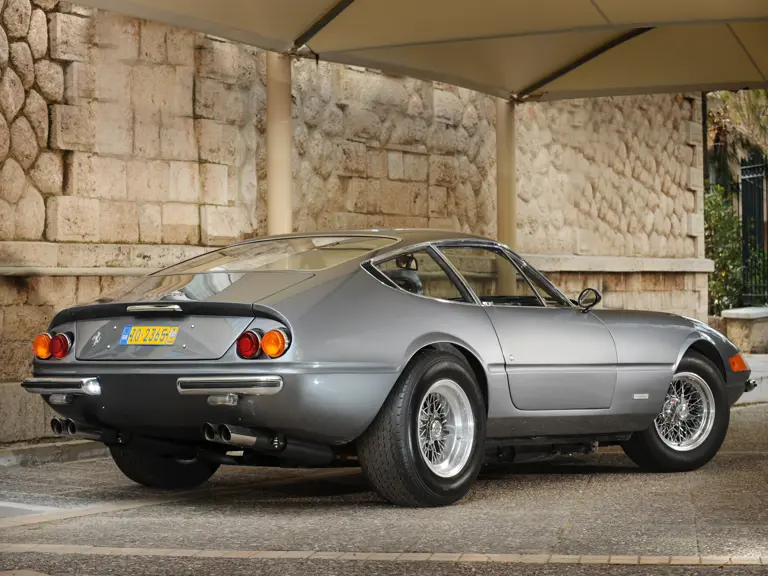
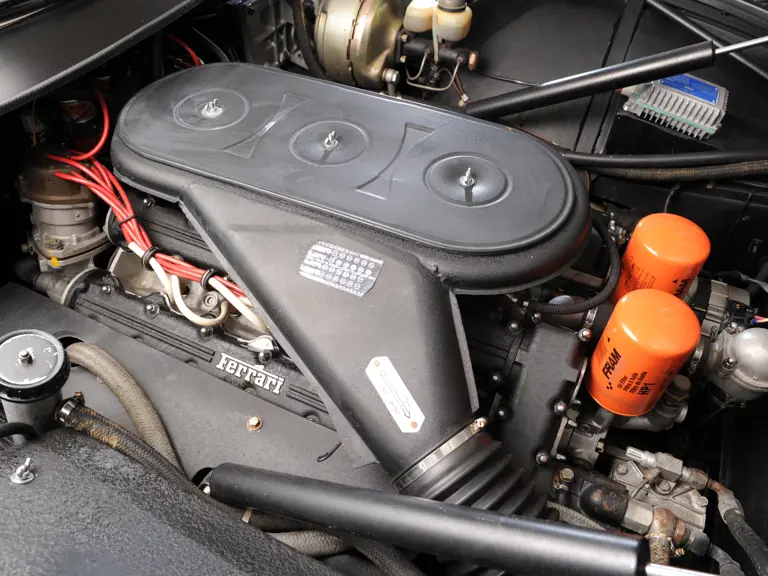
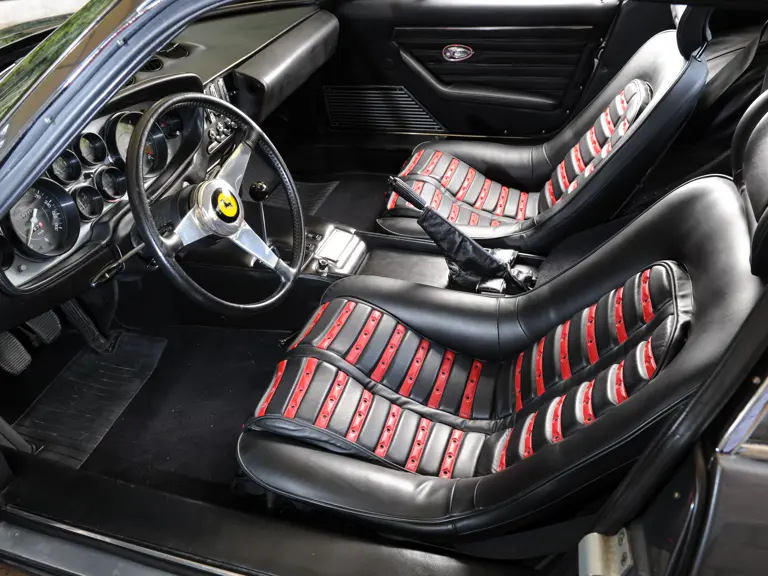
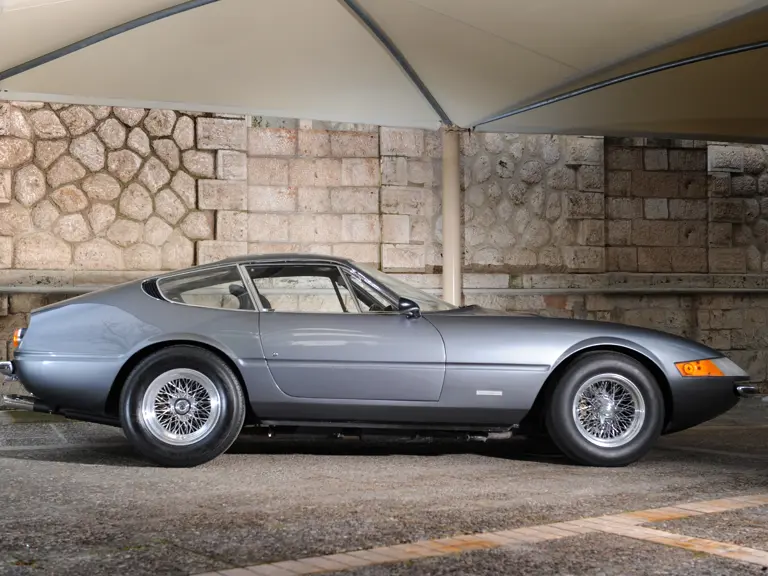
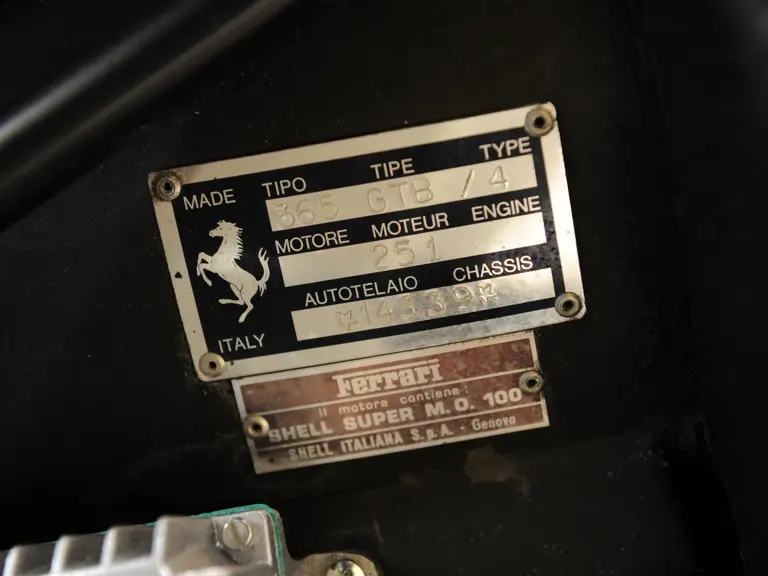
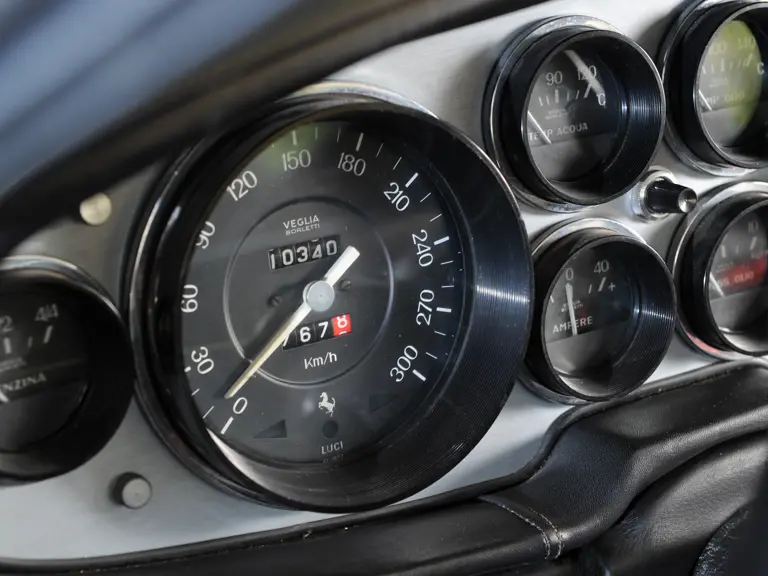
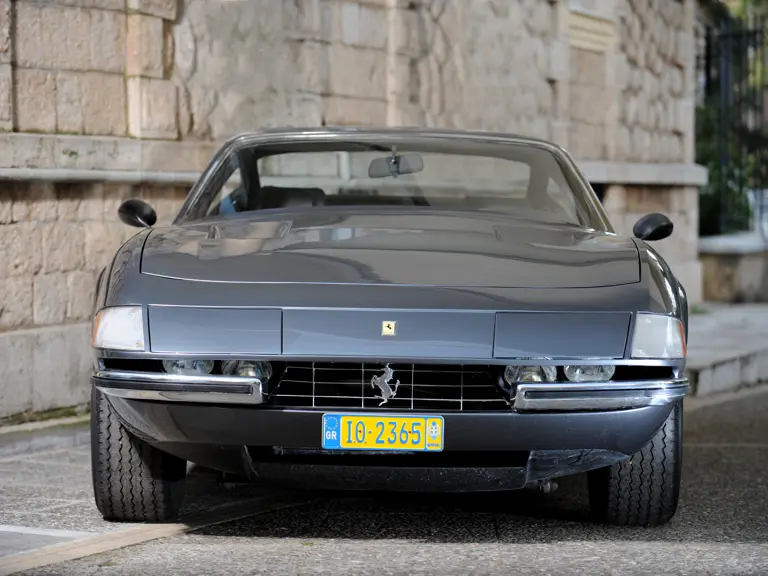

 | Monaco, Monaco
| Monaco, Monaco
